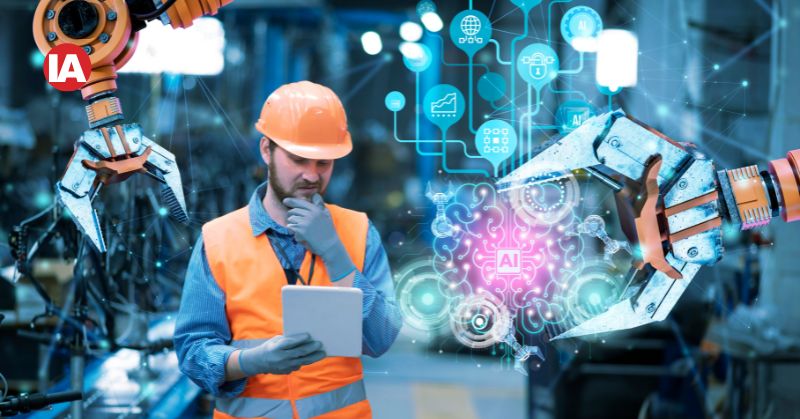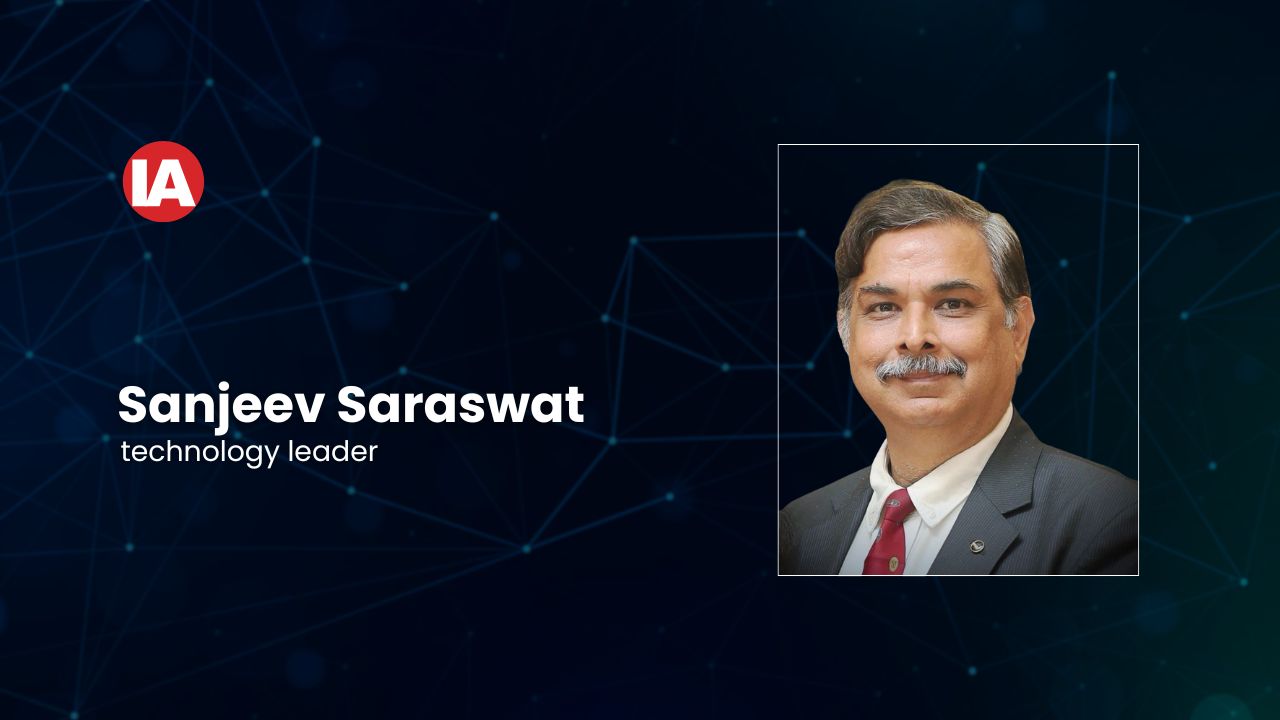
Beyond Automation: The Next Generation of Process Control
Explore the transformative trends driving the future of process industrial automation, including AI, IIoT, digital twins, and cybersecurity. Sanjeev Saraswat highlights how these advancements are reshaping industries with smarter, sustainable, and more efficient solutions.
![[object Object]](https://admin.industrialautomationindia.in/storage/articles/article-MC2Z3ZmeSQZOpsKCcEGLYuwp1ttTXhd5ebM1VHyd.jpg)
The future of process industrial automation lies in its increasing autonomy, intelligence, and interconnectivity, says Sanjeev Saraswat.
Process industrial automation is currently undergoing a rapid transformation driven by the convergence of several key technologies. The focus is shifting towards data-driven decision making, predictive maintenance, and increased efficiency through the integration of AI, IIoT, cloud computing, and digital twins. While traditional automation systems remain essential, there's a strong push for greater connectivity, cybersecurity, and human-machine collaboration. Sustainability and energy efficiency are also becoming increasingly important considerations. This evolving landscape is enabling industries to optimise operations, reduce downtime, and enhance safety in unprecedented ways, leading to smarter, more resilient, and more environmentally conscious production.
There's a lot happening in process industrial automation right now! Some of the key
trends transforming process industrial automation are:
1. Artificial Intelligence (AI) and Machine Learning (ML)

AI and ML have become pivotal in transforming industrial operations by providing intelligent systems capable of analysing vast amounts of data. These technologies enable the detection of intricate patterns, offer actionable insights, and facilitate autonomous decision-making. Aidriven systems can optimise operations, predict equipment failures, and dynamically adjust processes in real-time. Machine learning models, trained on historical and real-time data, continuously improve their accuracy and reliability, offering robust solutions to complex industrial challenges.
Applications:
- Predictive Maintenance: ML algorithms analyse sensor data (temperature, pressure, vibration) in oil refineries to predict equipment failures, avoiding unplanned downtime and costly repairs.
- Process Optimisation: AI optimises process parameters (temperature, pressure, flow rates) in chemical plants, enhancing yield, reducing energy consumption, and improving product quality.
- Quality Control: AI-powered vision systems in food processing detect defects (size, shape, colour), ensuring consistent quality and minimising waste.
2. Industrial Internet of Things (IIoT)
The IIoT connects a vast array of devices, sensors, and systems to create an intelligent and interconnected industrial ecosystem. This network enables seamless communication and data exchange between physical and digital environments. By collecting and analysing real-time data from connected devices, IIoT solutions enhance visibility into operations, streamline decision-making, and support predictive and proactive maintenance. The integration of IIoT in industrial settings fosters agility, efficiency, and innovation.
Applications:
- Remote Monitoring: IIoT sensors in water treatment plants track quality parameters (pH, chlorine levels) in real time, facilitating remote adjustments by operators.
- Asset Tracking: IIoT tags in manufacturing facilities track equipment and materials, optimising logistics and reducing losses.
- Smart Factories: Sensors in automotive manufacturing collect machine data (performance, energy consumption), enabling optimised schedules and improved efficiency.
3. Digital Twins
Digital twins create detailed virtual replicas of physical assets, processes, or systems, enabling comprehensive simulations and analyses. By integrating real-time data and predictive analytics, digital twins provide invaluable insights into system performance and potential failure points. Engineers can test scenarios, optimise configurations, and identify improvements without disrupting actual operations. This capability reduces risks, enhances operational efficiency, and accelerates innovation cycles.
Applications:
- Process Design: Digital twins simulate chemical plant configurations, optimising designs pre-construction to minimise costs and risks.
- Operator Training: Power plant operators use digital twins for scenario-based training, improving safety and reducing accident risks.
- Predictive Maintenance: Simulating equipment wear and tear helps predict maintenance needs, optimising schedules and minimising disruptions.
4. Cloud Computing
Cloud computing has transformed the way industrial organisations manage and utilise data and applications. By leveraging the cloud, companies can achieve unparalleled scalability, flexibility, and cost-effectiveness. Cloud platforms facilitate centralised data storage and advanced analytics, providing real-time insights accessible from anywhere. Additionally, cloud computing supports collaborative workflows and enables the deployment of cuttingedge technologies without significant upfront investment.
Applications:
- Data Storage and Analysis: Industrial operations leverage cloud platforms for scalable data storage and analysis, surpassing on-premise limitations.
- Remote Access and Collaboration: Cloud systems enable geographically dispersed teams to collaborate seamlessly.
- Software as a Service (SaaS): Automation software vendors offer cloud-based SaaS solutions, reducing on-premise infrastructure requirements.
5. Cybersecurity
As industrial systems grow increasingly connected, cybersecurity is paramount in safeguarding critical infrastructure and sensitive data. Advanced cybersecurity measures protect against unauthorised access, data breaches, and malicious attacks. Strategies include the implementation of robust firewalls, intrusion detection systems, and encryption protocols. Ensuring the security of interconnected systems not only protects operational integrity but also enhances trust and compliance with industry standards.
Applications:
- Firewalls and Intrusion Detection: Facilities deploy advanced firewalls to prevent unauthorised access.
- Secure Remote Access: Ensures authorised personnel access industrial systems securely while blocking unauthorised users.
- Data Encryption: Protects sensitive data in transit and storage, enhancing security resilience.
6. Human-Machine Collaboration
The integration of human and machine capabilities is redefining industrial workflows. Collaborative robots, or cobots, are designed to work alongside humans, augmenting productivity while maintaining safety. These robots handle repetitive or physically demanding tasks, freeing human workers to focus on strategic and creative responsibilities. Enhanced by AI, cobots can learn and adapt to complex tasks, making them indispensable in modern industrial environments.
Applications:
- Assembly Operations: Cobots assist automotive workers with repetitive tasks, improving productivity and reducing injury risks.
- Packaging and Palletizing: Cobots in food processing automate packing, allowing workers to focus on complex activities.
- Quality Inspection: Vision-equipped cobots aid inspectors, boosting accuracy and efficiency.
7. Sustainability
Sustainability has become a cornerstone of industrial innovation, with automation playing a
pivotal role in achieving energy efficiency, waste reduction, and environmental compliance.
Sustainable automation practices leverage advanced technologies to optimise resource
utilisation and minimise ecological impact. These initiatives align industrial growth with
global sustainability goals, fostering long-term resilience and competitiveness.
Applications:
- Energy Management: Automation systems optimise energy consumption in lighting, HVAC, and equipment.
- Waste Reduction: AI-powered vision systems detect defects early, minimising production waste.
- Emissions Monitoring: Automation ensures compliance by monitoring and controlling industrial emissions.
The road ahead

The future of process industrial automation lies in its increasing autonomy, intelligence, and interconnectivity. Wider adoption of AI and machine learning will refine process optimisation and predictive maintenance. Enhanced digital twins will facilitate real-time simulations, while expanded IIoT adoption will improve data flow and remote control.
Cybersecurity will become indispensable, protecting interconnected systems. Human machine collaboration will evolve further, with cobots becoming integral to operations. Sustainability will remain a core driver, embedding energy efficiency and waste reduction into industrial practices.
By embracing these advancements, industries can unlock unprecedented efficiency, reliability, and sustainability, positioning themselves for long-term success in a rapidly transforming world.
Sanjeev Saraswat is technology leader with over 30 years of experience in process instrumentation, automation, and digital transformation. With a degree in electronics and communication engineering, he has consistently driven innovation and technological advancement to address industrial challenges and enhance operational efficiency.
Sanjeev’s career has been marked by a strong focus on integrating emerging technologies into industrial processes, fostering digital transformation, and championing sustainability. He has played a pivotal role in global product development, automation strategies, and knowledge management, collaborating with international teams to deliver impactful solutions. His expertise spans strategic planning, leadership, and navigating complex technology landscapes to drive business growth.
An advocate for green technologies, Sanjeev has contributed significantly to energy transition initiatives, emphasizing sustainability in industrial practices. As a certified Independent Director, he brings a unique blend of technological insight and governance expertise to the boards he serves.
Sanjeev’s thought leadership is reflected in his articles, where he explores the convergence of technology and sustainability, offering actionable insights for the industry. Committed to sharing his knowledge and inspiring future advancements in technology-driven industries. His articles reflect a deep understanding of the evolving landscape and its potential to shape a smarter, more sustainable future.